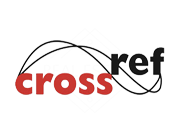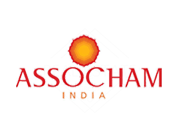Agrokomakchi (2023) Agrokomakchi platform of plants quarantine and protection agency, https://agrokomakchi.uz, 2023. (Accessed: 10.10.2024) (In Uzbek).
Banks, J. M. and Percival G. C. (2012). Evaluation of biostimulants to control guignardia leaf blotch (Guignardia aesculi) of horsechestnut and black spot (Diplocarpon rosae) of roses. Arbor Urban For. 38: 258-61.
Brauer, V. S., Rezende, C. P., Pessoni, A. M., De Paula, R. G., Rangappa, K. S., Nayaka, S. C., Gupta, V. K. and Almeida, F. (2019). Antifungal agents in agriculture: friends and foes of public health. Biomolecules 9: doi:10.3390/biom9100521.
Chen, P. C., Li, Y. Z., Xu, Y., Chi, X. Z., Yan, W. and Ju, R. T. (2007). Main pests in imported colored arbors and the occurrence. For. Pest Dis. 26: 31-34.
Dyakov, Y. T. and Elansky, S. N. (2024). General phytopathology, Yurait Publishing House, Moscow. pp. 230. (In Russian).
FRAC (2024). Fungal control agents sorted by cross-resistance pattern and mode of action (including coding for FRAC Groups on product labels). Fungicide Resistance Action Committee.
Ianovici, N., Ciocan, G. V., Matica, A., Scurtu, M. and Sesan, T. E. (2012). Study on the infestation by Cameraria ohridella on Aesculushippocastanum foliage from timisoara, Romania. Ann. West Univ. Timis. 15: 67-80.
Islam, T., Danishuddin, D., Noshin, N. T., Matin M. N., Barai, H. R. and Haque M. A. (2024). Resistance mechanisms of plant pathogenic fungi to fungicide, environmental impacts of fungicides, and sustainable solutions. Plants 13: doi:10.3390/plants13192737.
Islam, T., Haque, M. A., Barai, H. R., Istiaq, A. and Kim, J. J. (2024). Antibiotic resistance in plant pathogenic bacteria: recent data and environmental impact of unchecked use and the potential of biocontrol agents as an eco-friendly alternative. Plants 13: doi:10. 3390/plants13081135.
Kamilov, S. G., Nuraliev K. K., Sattarova R. K. and Khakimov A. A. (2020). The history of mycology and phytopathology development in Uzbekistan. Mikol. Fitopat. 54: 313-19. (In Russian)
Kaur, H., Yadav, A., Wadhwa, K., Jain, K. and Ghorai, S.M. (2021). Azoles used in agriculture as possible cause of azole-resistance in clinical Candida isolates. Biosci. Biotechnol. Res. Asia. 17: 789-99.
Khakimov, A. A., Omonliqov, A. U. and Utaganov S. B. (2020). Current status and prospects of the use of biofungicides against plant diseases. GSC Biol. and Pharm. Sci. 13: 119-26.
Kopacka, M. and Zemek, R. (2012). The effect of microclimatic conditions on Guignardiaaesculi infecting Horse Chestnut (Aesculushippocastanum) trees. In: Proc. of the Dendrological Days in Mlynany Arboretum SAS, September 18-19, Vieska nad Zitavou, Slovakia, pp. 18-19.
Kopacka, M., Nachman, G., and Zemek, R. (2021). Seasonal changes and the interaction between the Horse Chestnut leaf miner Cameraria ohridella and Horse Chestnut leaf blotch disease caused by Guignardia aesculi. Forests 12: 952.
Kurkin, V. A., and Belov, P. V. (2020). Flavonoids of horse chestnut buds (Aesculus hippocastanum L.). Chem. Plant Raw Mat. 3: 123-29. (In Russian)
Kutsik, R. V., Zuzuk, B. M. and Dyachok V. V. (2002). Horse chestnut (Aesculus hippocastanum L.). Anal. Obz. Prov. 4: 12-18.
Levitin, M. M. (2023). Agricultural phytopathology, 3rd edn., Yurait Publishing House, Moscow. pp. 283. (In Russian).
Palai, J. B., Jena, J. and Maitra, S. (2019). Prospects of underutilized food legumes in sustaining pulse needs in India–A review. Crop Res. 54: 82-88.
Pasquali, M., Pallez-Barthel, M. and Beyer, M. (2020). Searching molecular determinants of sensitivity differences towards four demethylase inhibitors in Fusarium graminearum field strains. Pestic. Biochem. Physiol. 164: 209-20.
Pastircakova, K., Pastircak, M., Celar, F. and Shin, H. D. (2009). Guignardia aesculi on species of Aesculus: new records from Europe and Asia. Mycotaxon. 108: 287-96.
Pastricakova, K. (2004). Guignardia aesculi (Peck) Stewart - fungal pathogen on Aesculus leaves in Slovakia. Acta Fyto. et Zoo. 7: 234-36.
Raskin, I. M. and Zimmerman, Y. S. (1982). Rational therapy of chronic venous insufficiency. Kaz. Med. Jur. 1: 58-61. (In Russian)
Timofeyeva, V. A. (2014). Diseases and pests of ornamental plants in the plantings of Belarus, NAS of Belarus, Central Botanical Garden, Minsk. pp. 185. (In Russian).
Timofeyeva, V. A., Golovchenko, L. A., Voynilo, N. V. and Linnik L. I. (2017). Efficiency of fungicides in protecting common horse chestnut from brown leaf spot. In: Proc. of the international scientific conference dedicated to the 85th anniversary of the central botanical garden of the national academy of sciences, Belarus, June 6-8, central botanical garden, Minsk, Belarus. pp. 437-40. (In Russian)
Van Der Aa, H. A. (1973). Studies in Phyllosticta I. Stud. in Mycol. 5: 1-110.
Vandishev, V. V. (2002). Ancient medicinal plant - horse chestnut a source of modern effective medicines. Med. Pom. 5: 36-38. (In Russian)
Zimmermannova, K. (2001). Houbove ochorenie listov pagastana konskeho (Aesculus hippocastanum L.) a jeho vyskyt na Slovensku. Folia Oeco. 28: 153-65.
Zubrod, J. P., Bundschuh, M., Arts, G., Bruhl, C. A., Imfeld, G., Knabel, A., Payraudeau, S., Rasmussen, J. J., Rohr, J., Scharmuller, A., Smalling, K., Stehle, S., Schulz, R. and Schafer, R. B. (2019). Fungicides: an overlooked pesticide class?. Environ. Sci. Technol. 53: 3347-65.
Banks, J. M. and Percival G. C. (2012). Evaluation of biostimulants to control guignardia leaf blotch (Guignardia aesculi) of horsechestnut and black spot (Diplocarpon rosae) of roses. Arbor Urban For. 38: 258-61.
Brauer, V. S., Rezende, C. P., Pessoni, A. M., De Paula, R. G., Rangappa, K. S., Nayaka, S. C., Gupta, V. K. and Almeida, F. (2019). Antifungal agents in agriculture: friends and foes of public health. Biomolecules 9: doi:10.3390/biom9100521.
Chen, P. C., Li, Y. Z., Xu, Y., Chi, X. Z., Yan, W. and Ju, R. T. (2007). Main pests in imported colored arbors and the occurrence. For. Pest Dis. 26: 31-34.
Dyakov, Y. T. and Elansky, S. N. (2024). General phytopathology, Yurait Publishing House, Moscow. pp. 230. (In Russian).
FRAC (2024). Fungal control agents sorted by cross-resistance pattern and mode of action (including coding for FRAC Groups on product labels). Fungicide Resistance Action Committee.
Ianovici, N., Ciocan, G. V., Matica, A., Scurtu, M. and Sesan, T. E. (2012). Study on the infestation by Cameraria ohridella on Aesculushippocastanum foliage from timisoara, Romania. Ann. West Univ. Timis. 15: 67-80.
Islam, T., Danishuddin, D., Noshin, N. T., Matin M. N., Barai, H. R. and Haque M. A. (2024). Resistance mechanisms of plant pathogenic fungi to fungicide, environmental impacts of fungicides, and sustainable solutions. Plants 13: doi:10.3390/plants13192737.
Islam, T., Haque, M. A., Barai, H. R., Istiaq, A. and Kim, J. J. (2024). Antibiotic resistance in plant pathogenic bacteria: recent data and environmental impact of unchecked use and the potential of biocontrol agents as an eco-friendly alternative. Plants 13: doi:10. 3390/plants13081135.
Kamilov, S. G., Nuraliev K. K., Sattarova R. K. and Khakimov A. A. (2020). The history of mycology and phytopathology development in Uzbekistan. Mikol. Fitopat. 54: 313-19. (In Russian)
Kaur, H., Yadav, A., Wadhwa, K., Jain, K. and Ghorai, S.M. (2021). Azoles used in agriculture as possible cause of azole-resistance in clinical Candida isolates. Biosci. Biotechnol. Res. Asia. 17: 789-99.
Khakimov, A. A., Omonliqov, A. U. and Utaganov S. B. (2020). Current status and prospects of the use of biofungicides against plant diseases. GSC Biol. and Pharm. Sci. 13: 119-26.
Kopacka, M. and Zemek, R. (2012). The effect of microclimatic conditions on Guignardiaaesculi infecting Horse Chestnut (Aesculushippocastanum) trees. In: Proc. of the Dendrological Days in Mlynany Arboretum SAS, September 18-19, Vieska nad Zitavou, Slovakia, pp. 18-19.
Kopacka, M., Nachman, G., and Zemek, R. (2021). Seasonal changes and the interaction between the Horse Chestnut leaf miner Cameraria ohridella and Horse Chestnut leaf blotch disease caused by Guignardia aesculi. Forests 12: 952.
Kurkin, V. A., and Belov, P. V. (2020). Flavonoids of horse chestnut buds (Aesculus hippocastanum L.). Chem. Plant Raw Mat. 3: 123-29. (In Russian)
Kutsik, R. V., Zuzuk, B. M. and Dyachok V. V. (2002). Horse chestnut (Aesculus hippocastanum L.). Anal. Obz. Prov. 4: 12-18.
Levitin, M. M. (2023). Agricultural phytopathology, 3rd edn., Yurait Publishing House, Moscow. pp. 283. (In Russian).
Palai, J. B., Jena, J. and Maitra, S. (2019). Prospects of underutilized food legumes in sustaining pulse needs in India–A review. Crop Res. 54: 82-88.
Pasquali, M., Pallez-Barthel, M. and Beyer, M. (2020). Searching molecular determinants of sensitivity differences towards four demethylase inhibitors in Fusarium graminearum field strains. Pestic. Biochem. Physiol. 164: 209-20.
Pastircakova, K., Pastircak, M., Celar, F. and Shin, H. D. (2009). Guignardia aesculi on species of Aesculus: new records from Europe and Asia. Mycotaxon. 108: 287-96.
Pastricakova, K. (2004). Guignardia aesculi (Peck) Stewart - fungal pathogen on Aesculus leaves in Slovakia. Acta Fyto. et Zoo. 7: 234-36.
Raskin, I. M. and Zimmerman, Y. S. (1982). Rational therapy of chronic venous insufficiency. Kaz. Med. Jur. 1: 58-61. (In Russian)
Timofeyeva, V. A. (2014). Diseases and pests of ornamental plants in the plantings of Belarus, NAS of Belarus, Central Botanical Garden, Minsk. pp. 185. (In Russian).
Timofeyeva, V. A., Golovchenko, L. A., Voynilo, N. V. and Linnik L. I. (2017). Efficiency of fungicides in protecting common horse chestnut from brown leaf spot. In: Proc. of the international scientific conference dedicated to the 85th anniversary of the central botanical garden of the national academy of sciences, Belarus, June 6-8, central botanical garden, Minsk, Belarus. pp. 437-40. (In Russian)
Van Der Aa, H. A. (1973). Studies in Phyllosticta I. Stud. in Mycol. 5: 1-110.
Vandishev, V. V. (2002). Ancient medicinal plant - horse chestnut a source of modern effective medicines. Med. Pom. 5: 36-38. (In Russian)
Zimmermannova, K. (2001). Houbove ochorenie listov pagastana konskeho (Aesculus hippocastanum L.) a jeho vyskyt na Slovensku. Folia Oeco. 28: 153-65.
Zubrod, J. P., Bundschuh, M., Arts, G., Bruhl, C. A., Imfeld, G., Knabel, A., Payraudeau, S., Rasmussen, J. J., Rohr, J., Scharmuller, A., Smalling, K., Stehle, S., Schulz, R. and Schafer, R. B. (2019). Fungicides: an overlooked pesticide class?. Environ. Sci. Technol. 53: 3347-65.










